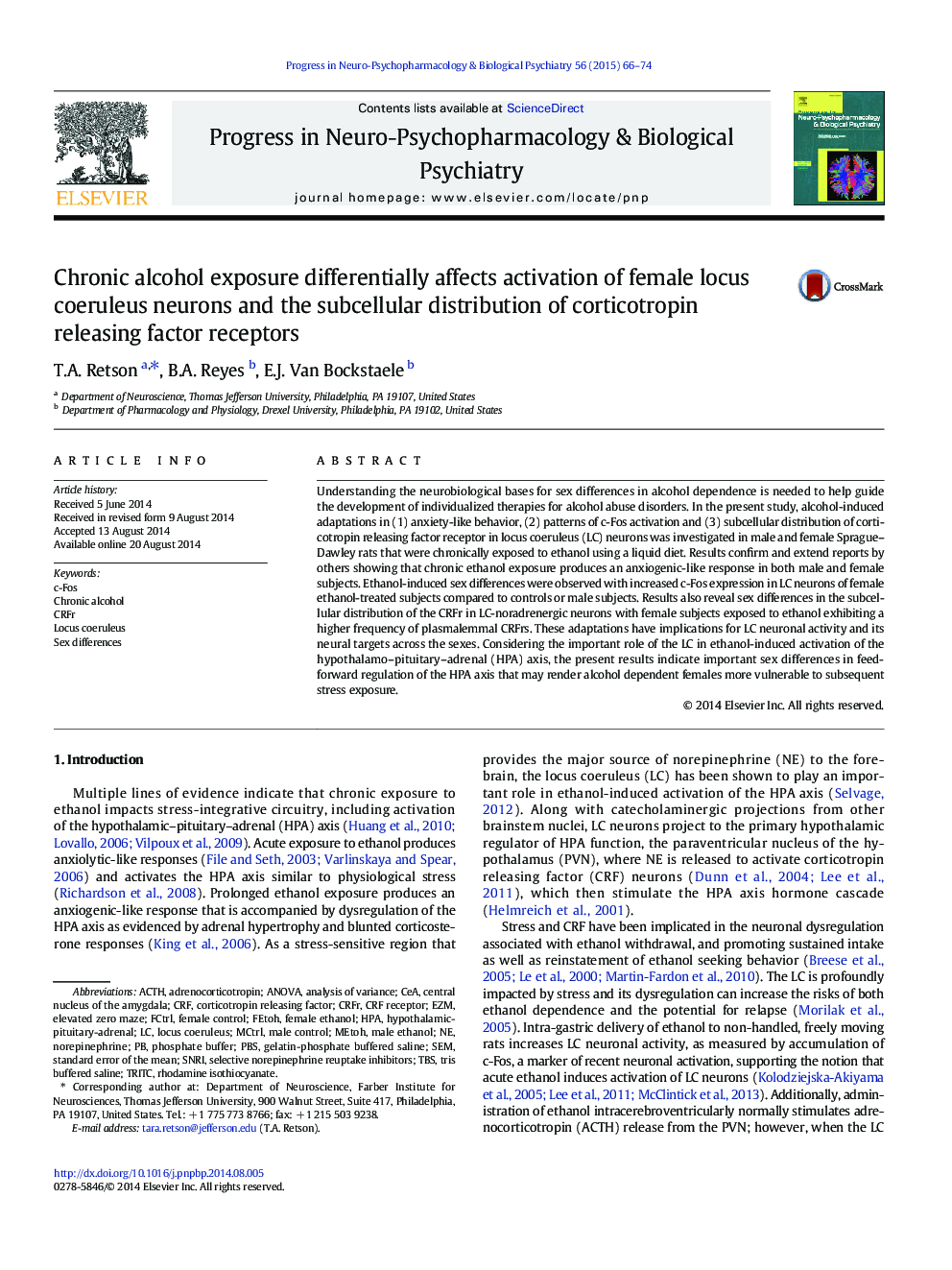| Article ID | Journal | Published Year | Pages | File Type |
|---|---|---|---|---|
| 2564796 | Progress in Neuro-Psychopharmacology and Biological Psychiatry | 2015 | 9 Pages |
•Chronic ethanol exposure results in an anxiety-like phenotype by elevated zero maze.•LC activity, measured by c-Fos, is altered between sexes after chronic ethanol exposure.•Sex differences are observed in the subcellular distribution of CRFrs in LC neurons.
Understanding the neurobiological bases for sex differences in alcohol dependence is needed to help guide the development of individualized therapies for alcohol abuse disorders. In the present study, alcohol-induced adaptations in (1) anxiety-like behavior, (2) patterns of c-Fos activation and (3) subcellular distribution of corticotropin releasing factor receptor in locus coeruleus (LC) neurons was investigated in male and female Sprague–Dawley rats that were chronically exposed to ethanol using a liquid diet. Results confirm and extend reports by others showing that chronic ethanol exposure produces an anxiogenic-like response in both male and female subjects. Ethanol-induced sex differences were observed with increased c-Fos expression in LC neurons of female ethanol-treated subjects compared to controls or male subjects. Results also reveal sex differences in the subcellular distribution of the CRFr in LC-noradrenergic neurons with female subjects exposed to ethanol exhibiting a higher frequency of plasmalemmal CRFrs. These adaptations have implications for LC neuronal activity and its neural targets across the sexes. Considering the important role of the LC in ethanol-induced activation of the hypothalamo–pituitary–adrenal (HPA) axis, the present results indicate important sex differences in feed-forward regulation of the HPA axis that may render alcohol dependent females more vulnerable to subsequent stress exposure.
